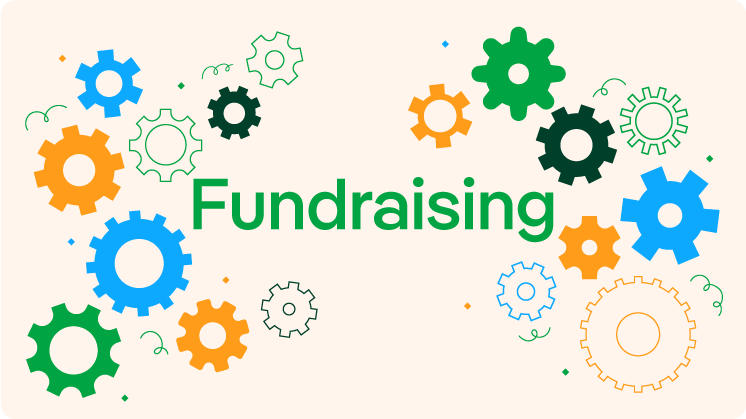The Role of Neighborhood Engagement in Nonprofit Fundraising: Structure Lasting Relationships for Sustainable Support
Area involvement is significantly identified as an important element of successful nonprofit fundraising. The techniques and methods used to involve areas vary extensively, elevating essential inquiries regarding performance and influence.
Comprehending Area Involvement
Community interaction is an important element of successful not-for-profit fundraising initiatives. It refers to the methods and activities that companies employ to connect with their local neighborhoods, promoting relationships that are equally helpful. Understanding area engagement entails acknowledging its diverse nature, which includes outreach, participation, and collaboration. Nonprofits must recognize essential stakeholders-- such as community participants, local businesses, and various other organizations-- to produce reliable involvement approaches.
Effective community involvement is asserted on active listening and responsiveness to the demands and interests of the neighborhood. This procedure involves getting comments, recognizing area characteristics, and making certain that the company's goal aligns with local concerns. Engaging the area can take different kinds, including public conferences, volunteer chances, and collaboration initiatives, each created to encourage participation and investment in the organization's goals.
Moreover, neighborhood involvement should be approached as a recurring discussion as opposed to an one-time initiative. By cultivating an inclusive setting where area voices are heard and valued, nonprofits can build a solid foundation for future fundraising ventures. Eventually, a deep understanding of area involvement empowers organizations to develop authentic links that boost their general efficiency and sustainability.
Benefits of Solid Relationships
Strong partnerships formed via community involvement return numerous benefits for not-for-profit fundraising efforts. Most importantly, these partnerships foster count on and reputation, crucial elements in motivating donors to add. When prospective supporters see a not-for-profit proactively associated with their neighborhood, they are more probable to rely on its mission and influence.

In addition, these connections promote efficient interaction. Nonprofits can take advantage of their links to share tales of influence, updates, and requires, making certain that fans stay informed and engaged. This open line of communication not only reinforces bonds yet also encourages referral promotion, increasing the not-for-profit's reach.
Finally, solid community connections can bring in brand-new companions and sponsors. Services and individuals are a lot more likely to straighten with organizations that show meaningful area involvement, supplying extra sources and assistance that can considerably improve fundraising capabilities. Hence, cultivating robust relationships with community engagement is integral to a not-for-profit's long-lasting fundraising success.
Techniques for Efficient Interaction
How can nonprofits successfully engage their communities to improve fundraising initiatives? Creating targeted approaches is crucial for cultivating significant links. First, look at here leveraging social media sites platforms allows organizations to share their goal dynamically and interactively, reaching a more comprehensive audience. Routine updates, engaging material, and calls-to-action can galvanize community passion and participation.
Second, holding neighborhood events, such as workshops, volunteer opportunities, or fundraising drives, promotes in person interaction, allowing nonprofits to display their influence and efforts. These occasions not just raise funds yet additionally grow relationships and enable area participants to engage straight with the cause.
Third, executing tailored interaction methods can improve interaction. Tailoring messages to details donor sectors based upon rate of interests and past payments cultivates a sense of belonging and financial investment in the organization's mission.
Lastly, developing collaborations with local organizations and community leaders can magnify outreach initiatives. Joint initiatives can boost presence and reputation, demonstrating a cumulative dedication to the community's wellness. By incorporating these techniques, nonprofits can construct lasting connections that enhance fundraising efforts and drive lasting assistance.
Measuring Interaction Success
While involving the area is essential for successful not-for-profit fundraising, gauging the performance of these engagement efforts is similarly important. Establishing clear metrics allows companies to assess how well they are attaching with their audience and achieving their fundraising goals. Secret efficiency indications (KPIs) such as contributor retention prices, volunteer engagement navigate to this site degrees, and involvement on social media platforms offer substantial data for assessment.

Routinely analyzing these metrics allows organizations to pivot their strategies when essential, guaranteeing that neighborhood involvement continues to be lined up with their overall objective. Furthermore, sharing these outcomes with stakeholders fosters openness and constructs trust, urging further community involvement. Inevitably, a robust measurement structure not only educates future fundraising initiatives yet likewise reinforces the connection between the not-for-profit and its fans, preparing for lasting success.
Study in Neighborhood Influence
Various instance studies show the extensive influence that community interaction can carry nonprofit fundraising success. One noteworthy instance is the "Something to chew on" initiative, where a regional food financial institution partnered with colleges and businesses to host area dinners. These occasions not just raised funds however also promoted a feeling of belonging amongst participants, considerably boosting contributor retention prices.
One more engaging case is the "Green Spaces Project," which involved regional citizens in the revitalization of metropolitan parks. This effort not only gathered financial backing from regional businesses yet additionally grew a volunteer base that contributed to recurring upkeep and shows. The sense of possession and pride among community members translated into continual payments.
In the world of arts, the "Art for All" project effectively engaged regional musicians and customers to create joint art installations, bring about boosted visibility and donations for a local arts not-for-profit.
These instances highlight that when nonprofits focus on neighborhood involvement, they can develop long-term connections that improve fundraising initiatives, guaranteeing sustainable assistance and promoting a dynamic community society. Such instances demonstrate that community involvement is not just an approach however a necessary column of not-for-profit success.
Verdict
In conclusion, neighborhood interaction is indispensable to the success of nonprofit fundraising efforts. Ultimately, a durable structure of neighborhood support not only intensifies fundraising potential yet likewise grows a culture of partnership, crucial for achieving long-lasting business objectives and sustaining significant effect. fundraising consultant.
Nonprofits have to identify crucial stakeholders-- such as area participants, local companies, and various other organizations-- to create efficient involvement strategies.

In conclusion, community involvement is indispensable to the success of not-for-profit fundraising efforts.